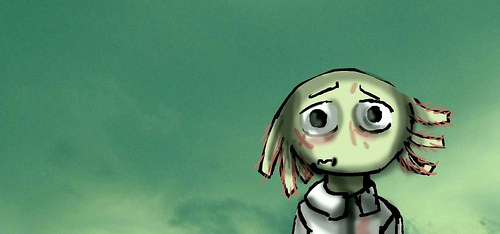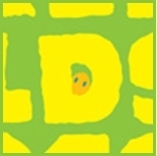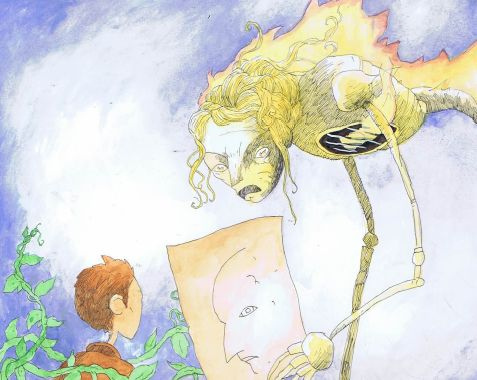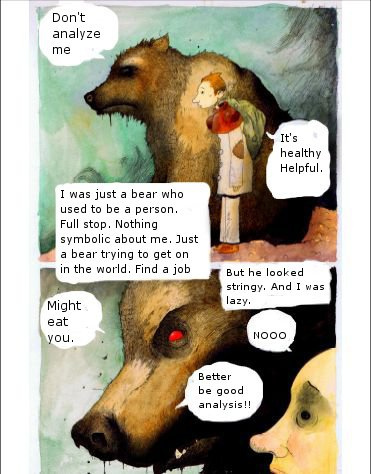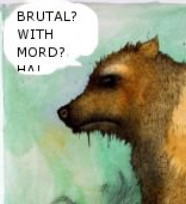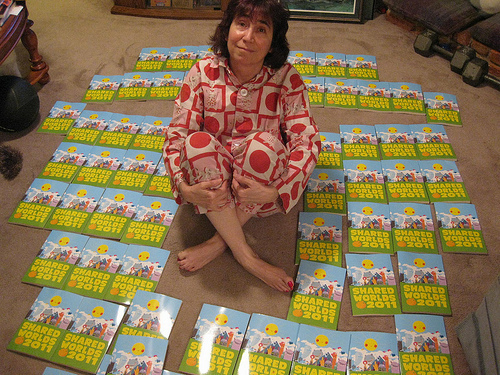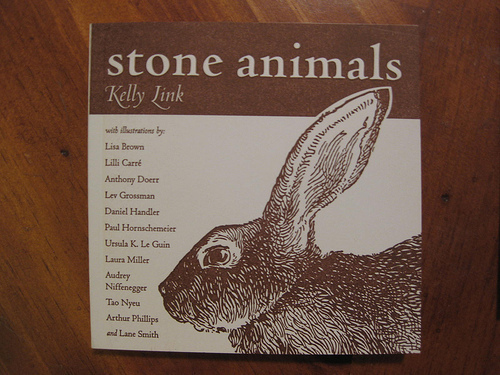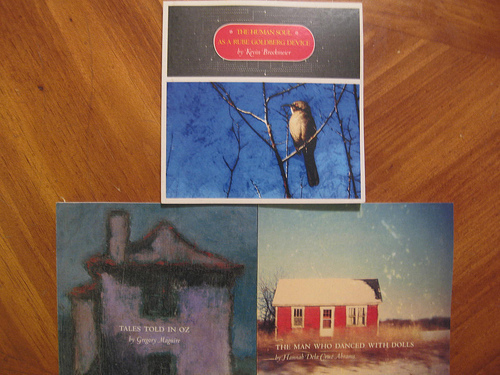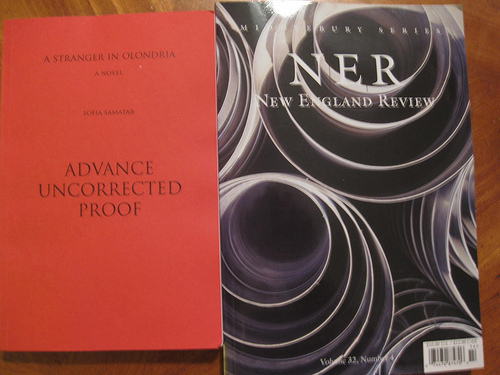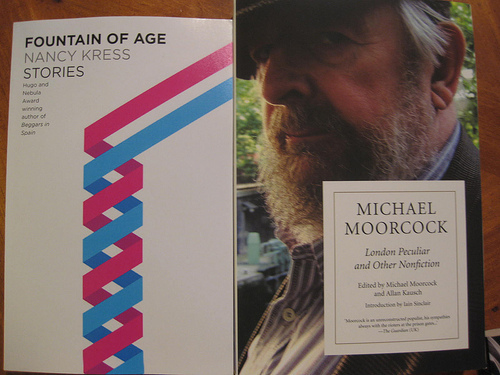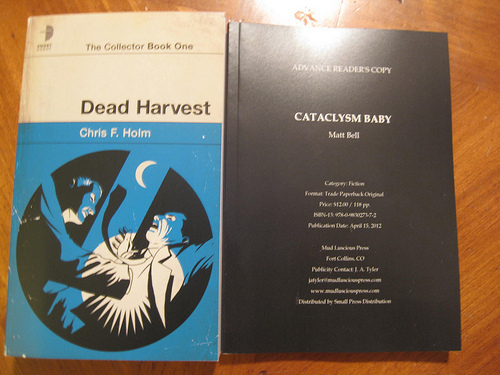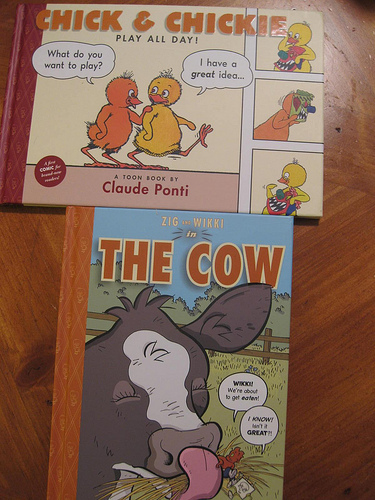Jeff VanderMeer's Blog, page 34
February 22, 2012
The Steampunk Bible: For Best Related Book, Hugo Awards

I'm decidely under the weather for a variety of reasons and won't be blogging much this week, but I did want to remind Hugo voters that The Steampunk Bible: An Illustrated Guide to the World of Imaginary Airships, Corsets and Goggles, Mad Scientists, and Strange Literature (Abrams Image), by myself and S.J. Chambers, is eliglble in the best-related book category.
The Steampunk Bible features over 250 full-color images and over 60,000 words of text covering all aspects of the steampunk subculture. In addition to being featured on the CBS Morning Show, it was written up in the NYT and lots of other national media outlets, in addition to a full-on feature in the LA Times.
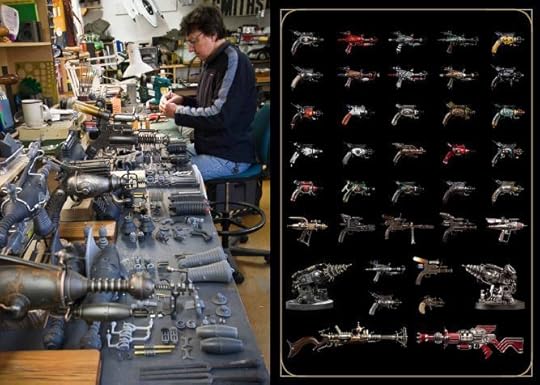
I do very few of even the softest of sells re nomination posts, but so many amazing creators are featured in the book I'd like to see them recognized. More importantly, this just reminds you the book came out in 2011.
The Steampunk Bible: For Best Related Book, Hugo Awards originally appeared on Ecstatic Days on February 22, 2012.




February 20, 2012
Weirdfictionreview.com Features M. John Harrison, Reading the Weird, and More
Check out the latest on our Weirdfictionreview.com, which includes Desirina Boskovich's wonderful essay on M. John Harrison's short story "Black Houses," the finale of Leah Thomas's Reading the Weird comic, selections from three unpublished novels by Michael Cisco, the art of O.L. Samuels, and much more!
Also note the editorial on what's upcoming–some really exciting things!
Weirdfictionreview.com Features M. John Harrison, Reading the Weird, and More originally appeared on Ecstatic Days on February 20, 2012.
February 17, 2012
What Cheryl Said
Pretty much everything Cheryl Morgan says here about panels makes sense to me. It'd be really nice, too, if con organizers as a rule got ahead of this issue and didn't put participants in the position of having to suggest female panelists or to point out the problem.
What Cheryl Said originally appeared on Ecstatic Days on February 17, 2012.




February 16, 2012
Shared Worlds Critter Map: The Watch-It and the Seven Songs of Sirius
The Critter Map registration/donation drive for the Shared Worlds SF/F teen writing camp I help run has been a big success. The Huffington Post, Boing Boing, SF Signal and several more have picked up on it, including, of course the authors involved (Neil Gaiman, Patrick Rothfuss, and more!).
In terms of registration, we're now well ahead of last year at this point and we have applications from students in Japan, Canada, France, Indonesia, and Germany, in addition to from all over the U.S. This really is a unique experience for the students, and a life-changing one. Go check out the Critter Map, but you can also read my entry and Ann's below the cut…
SEVEN SONGS OF SIRIUS
Ann VanderMeer
Ok, it might look all peaches and light from where you stand, but trust me, these smiles are just for show. We've gotta smile all the time because you know what they say; when you're smiling, the whole world smiles with you. And if you cry, well, best not to even imagine it.
We call ourselves the Seven Songs of Sirius because singing keeps the boogieman away. Plus it keeps us out of trouble, and although we look sweet, we are highly mischievous. We've been known to cause an International (Or should we say Galactical?) situation once or twice… but not on purpose! Floating around in some dark swirly blackness can be exciting and thrilling to some, but not us. We'd just be happy to all have our own separate names.
THE WATCH-IT
Jeff VanderMeer
The Watch-it is the shyest creature in the world. It hides not just inside books and other forests of text, but especially in the nooks and crannies around letters. The Watch-it particularly enjoys the dark grottos to be found in the middle of "D's" or "O's", and on rare occasions has been seen delightedly sliding down these cool, smooth surfaces for hours. From these hiding places, the Watch-it will observe the reader with an enigmatic expression that some scientists believe to be awe and others to be contempt. (Still others believe its expression is dependent on the reaction of the reader to the text.)
The Watch-it is highly adaptable and has in recent years begun to inhabit websites and e-books with relative ease. A Watch-it feeds off of the reading experience, which can create a feeling of laziness or fatigue in the reader. In cases of major infestations, Watch-its may imbue the reader with a temporary sense of unease and paranoia. The Watch-it can no sooner survive without its surrounding text as a hermit crab may survive with its shell, but is otherwise surprisingly durable. The creature cannot be squashed by the weight of pages, nor killed by power surges or power outages.
If a book or website isn't read, the Watch-it may lie dormant for many months or years without dying. In this dormant state, the Watch-it enters a state of hibernation unique in the animal kingdom. It will assume the shape of a letter and mimic the letter so perfectly as to be unnoticeable. However, if a Watch-it is forced to hibernate for more than a century, it will die. More than one monk in the Middle Ages would open a book at an angle only to find all the letters of a page sliding brittle and still to the floor.
Shared Worlds Critter Map: The Watch-It and the Seven Songs of Sirius originally appeared on Ecstatic Days on February 16, 2012.




Please Consider Ann VanderMeer, Best Editor, for the Hugos
As you fill out your Hugo ballot this year, I'd just like to put in a plug for my wife, Ann VanderMeer, for Best Editor (Short Form).
What did she accomplish as an editor in 2011?
—The Weird: A Compendium of Strange and Dark Stories (Atlantic), a 750,000-word, 100-year overview of weird fiction covering everyone from Kafka to Ben Okri, Shirley Jackson to Michael Chabon, Robert Bloch to Kelly Link, and 109 more. It's as far as we know the largest collection of this kind in a single volume and highly lauded by The Guardian and Times Literary Supplement, among others.
—The Thackery T. Lambshead Cabinet of Curiosities (HarperVoyager), an original anthology with contributors including Michael Moorcock, Lev Grossman, Holly Black, Jeffrey Ford, Charles Yu, Alan Moore, Naomi Novik, Tad Williams, and many more. It also included over 70 original illustrations from the likes of Mike Mignola and Jan Svankmajer.
—ODD? (Cheeky Frawg), an e-book only anthology of reprints and originals, ranging from Jeffrey Ford and Nalo Hopkinson to Hiromi Goto and Amos Tutuola.
—Two months of Weirdfictionreview.com, which in November and December of 2011 published over 90 pieces of nonfiction and fiction from China Mieville, Thomas Ligotti, Tanith Lee, and many others. The full list for last year can be found here.
On all of these projects, I co-edited, but Ann also edited solo:
–Two issues of Weird Tales magazine, in addition to commissioning several "one-minute weird tales" video projects and exclusive online fiction.
She would have edited four in 2011 if not for the regime change.
I would much prefer it that everyone who liked these projects and wants to reward the effort that went into them—The Weird alone is like editing five or six anthologies—vote for Ann solo. I've seen first-hand just how much effort she's put into all of these projects.
Please Consider Ann VanderMeer, Best Editor, for the Hugos originally appeared on Ecstatic Days on February 16, 2012.
February 14, 2012
The Situation: Analyzing Story from a Writer's Point of View
Having recently come back from Trinity Prep School in Orlando, where the students were reading my short story "The Situation," available at GeekDad, as well as its web-comic adaptation on Tor.com, I thought I'd post some of my notes about the story. This examination is a work in progress, and although it contains sub-sections, there's a bit of bleed between topics still. There's an emphasis on beginnings because for certain works of the surreal how the text teaches you to read it is extremely important. I may not have time to talk about the transition from text to comic this week, but I'll return to it next week. And, in the meantime, you can, as noted, read both the text and comic online.
The title of this post indicates it's from a writer's point of view, but it's also therefore from a creative writing teacher's point of view in some sense.
This post contains massive spoilers with regard to "The Situation," by the way. – Jeff
THE SITUATION…
SUMMARY:
An employee of an anonymous company that makes fantastical creatures writes a report that describes the ever-worsening details of his employment and the degradation of a project he is helping to manage. Office politics of the kind typical in contemporary U.S. businesses factor heavily in the plot. An ensemble cast of fellow employees, and friction between them, provides the drama.
FIRST PARAGRAPH:
How It Began: Degradation of Existing Processes. My Manager was extremely thin, made of plastic, with paper covering the plastic. They had always hoped, I thought, that one day her heart would start, but her heart remained a dry leaf that drifted in her ribcage, animated to lift and fall only by her breathing. Sometimes, when my Manager was angry, she would become so hot that that paper covering her would ignite, and the plastic beneath would begin to melt. I didn't know what to say in such situations. It seemed best to say nothing and avert my gaze. Over time, the runneled plastic of her arms became a tableau of insane images, leviathans and tall ships rising out of the whirling, and stranger things still. I would stare at her arms so I did not have to stare at her face. I never knew her name. We were never allowed to know our Manager's name. (Some called her their "Damager," though.)
POINT OF VIEW:
Although I've used a first-person narrator for "The Situation," the nature of the story means that the narrator is theoretically constrained by the form, and characterization occurs within that constraint. The narrator is filing a report of some kind—a complaint, an account with the specific purpose to document "the situation." For this reason, the narrator is not likely to suddenly give the reader a huge amount of personal information up front. As the story progresses and the narrator loses some of his dedication to the form he has chosen, or decides personal details are relevant, more clues about the narrator's life, beliefs, and personality will become clear. But here, at the beginning, the narrator's focus is elsewhere. Given the surreal quality of the story, this approach to point of view also allows the strangeness of the Company and its workers to stand out in sharp relief, unencumbered by the details of the narrator's personal life.
In this kind of scenario, you must give the reader clues about the narrator through what is being described, in this case the Manager. For example, by the end of the first paragraph we know that the narrator is an employee at a Company where something has gone wrong (Degradation of Existing Processes). We know that his Manager has had to get angry at him, and that he doesn't think this is fair. However, we can also assume that perhaps what has gone wrong is linked to the Manager's anger. Further, we know that the Company is fairly dehumanizing—the narrator doesn't even know his Manager's name. We can also intuit that whatever "the situation" is or was, it must have been traumatic for the narrator to devote his time to writing an actual report. The narrator clearly fears his Manager as well.
At the same time, the narrator can be petty—the aside about the nickname of the "Damager" isn't necessarily relevant information, and definitely conveys a subjectivity at odds with a report. "Damager" clearly is the narrator's attempt to influence our opinion of whatever happens next, to put himself in a positive light. Also influencing our opinion is the shadowy "They" of "They had always hoped…that one day her heart would start." Who is "They?" The best answer is the "They" of intra-office gossip, thus introducing the idea that the narrator may sincerely believe he is reporting objective truth but already failing to do so.
Given that the story includes the narrator's co-workers, opening "The Situation" with a description of the Manager supplies the expectation that the Manager will provide an anchor, or cohesion, perhaps even serve as a framing device or organizational device. And, in fact, the story ends with the actions of the Manager, and that relationship weaves through the narrative in a way that the other relationships do not. Although the other employees are the instruments of the narrator's misery, the Manager in a sense provides the spark.
NARRATIVE:
What to make of a manager made of plastic, with a dry leaf for a heart? You might be inclined to take that description figuratively, and thus I follow up with a reference to heat melting the plastic and igniting the paper. In fantastical fiction, giving weight and physicality to a description can ensure readers do not interpret reality as mere metaphor.
"The Situation" plunges the reader into utter strangeness immediately. There is a definite moment of adjustment for readers. They will have to take a leap of faith, to accept that what might be figurative in a different type of story about an office building will have a literal beachhead in the reality of this story. Why is it important in this case to immediately immerse the reader rather than lead him or her into this recognition by degrees? Because the precepts and tropes of my story do not match up with the expectations a reader might have for a conventional fantasy or science fictional approach to the subject matter. Therefore, to provide a more conventional opening would send the wrong message.
And yet, what is the subject of the story thus far? Something completely mundane: an office employee complaining about his manager. The "situation" thus far is familiar to almost anyone; indeed, a situation that most people can easily identify with. Without that mundane aspect, the elements of mad invention in the story would be too unanchored, too ethereal.
In support of this familiarity, note, too, the clinical approach to the section titles: "How It Began: Degradation of Existing Services." There's a deliberate counterpoint between the neutrality of seeming objective neutrality re a title like "The Situation" and an opening subsection title like "How It Began: Degradation of Existing Processes" and the actual style employed by the narrator in describing the situation, which is meant to convey hurt and suppressed anger and sadness. This juxtaposition also highlights the disconnect between the business-speak often used by HR departments to make generic potentially dramatic situations. (Note also that the title is not something baroque like "The Mad Happenings at My Place of Employ During the Time of Walking Fish" for the same reason.)
Not only do these titles mimic business reports, they increase tension, foreshadow, and allow me to cut between scenes elegantly without the need for typical transitions. This last reason is important because some of the sections double-back to past events.
DESCRIPTION:
Surreal fiction, ironically enough, almost always uses precise observation and realistic details to achieve its affects. Any closer look at a Salvador Dali composition shows a rigorous and almost traditional adherence to conveying reality…all at the service on the macro level of conveying something surprising, shocking, non-realistic. The descriptions in "The Situation" are absurd to some degree, but they too depend on specific detail so that what seems like subtext poking up through the surface of the story (the Manager is heartless) is, in fact, surface detail tinged with a satirical flourish.
Whether you read further depends in part on whether the reader is willing to accept those initial absurdities, and in part that depends on how good I am at rendering those absurdities. Creating that effect in what is a static opening scene—a Manager sitting at a desk—means conveying some kind of action through description, as well. For these reasons, the Manager doesn't just have "a leaf where her heart should have been." Instead, the Manager's "heart remained a dry leaf that drifted in her ribcage, animated to lift and fall only by her breathing." The Manager doesn't just "catch on fire" when angry—the paper ignites and the plastic melts, with the consequence that weird images are burned into her arms.
Motion, then, plays a large role in this opening paragraph, and serves as a substitute for action. This motion also supports a hall of mirrors providing additional depth in that the narrator is conveying the essence of not one, current, meeting with the Manager, but several over a long period of time. The passage of time is also movement.
So what is happening in the paragraph? Not much. What's happening? A lot is happening.
SETTING:
"The Situation" is largely an example of how in a surreal story, the physical strangeness of the characters and creatures described can become the setting. The office building itself has some quirks that I dually note, but for the most part it is the standard cubicles-and-desks space one would expect—a space deliberately blank so as not to clash with or obscure the character descriptions. Some elements that would be part of the setting in a "normal" story—like personnel files—manifest in this story as animals, and thus are pulled out of the setting to become, on some level, characters. Also note that because the narrator works there, it is unlikely he would describe much of a building with which he was so familiar.
ENDING:
Despite most scenes focusing on the narrator's relationship with his co-workers, the Manager and her temper are referenced again and again, until at the end, after the narrator has been fired and physically kicked out of the building, he stares up at the window of Mord's office, "and there my Manager stood: on fire from head to toe, and no extinguishing it this time. She looked down at me, and although I could not read the expression on her face I would like to think she was happy, for a moment. Then the Mord rose behind her, roaring as he rose and rose and rose, as if he might never stop growing, to fill the entire window. A slap of a paw and my Manager jerked back out of sight. The fire spread from window to window, room to room, while the Mord raged, thrashing and fighting. Once, he stopped to stare down at me, paws against the glass. Once, he looked out into the gray sky as if searching for something. A shadow, tiny and on fire began to drift down from the burning windows. Was it a leaf? Who could tell? By the time it reached the ground, it would have fallen away into nothing. This, then, was the situation at the time I left the company."
From beginning to end, "The Situation" has fulfilled its explicit promise from the beginning to document a "situation" and its implied promise that the Manager's relationship with the narrator will frame and define the conflict in the story. Ultimately, the Manager's inaction, ineffectiveness, and poor decision-making doom the narrator more than any other element. The leaf that floated in her chest now floats to the ground, burning up. The narrator's situation has also been her situation.
OTHER POSSIBLE APPROACHES:
How radically does a story change depending on the method of telling? Here are two ways I could have started the story.
—He hated his manager, who he called his Damager—a nickname he spread like a virus whenever he talked to anyone else in the Company, although he'd deliver it with a smile, only joking. But it was true he hated her. No matter how good his ideas, she always shot them down. If not for his terror at what Human Resources could do to him, he would have long ago reached across the desk and plucked the leaf that floated inside her empty chest cavity, held it, crumbling in his hand, and watched her plastic frame tremble with the knowledge that her life was his to do with what he wished.
—My employee was extremely insubordinate, always disobeying my direct orders and making products he had not been asked to make. This is what caused the situation—that and the way he would defy me in person, to my face. I tried to keep my temper, but I was not made to be calm or patient. This may have been a defect in my creation, but surely the Company had made me this way for a reason? I could always feel the timing mechanism that controlled my heart—a leaf; so delicate; so ephemeral—floating back and forth, and this made me angrier still: that the core of me should be so vulnerable, so exposed. It made me seek control in shameful ways: I cut myself, I gouged and curled the knife through my plastic flesh because I could, because it did not hurt when it should hurt. But my employee had no empathy for any of this, or the pressures on me from my own bosses. To him, I was just an impediment to his ambition. I was damaged.
What stories would have resulted from these beginnings?
Who tells a story and what they emphasize, what they remember, and how they perceive other human beings make enormous differences even when relating the same events.
The Situation: Analyzing Story from a Writer's Point of View originally appeared on Ecstatic Days on February 14, 2012.
February 13, 2012
The Liminal People: A Great First Novel
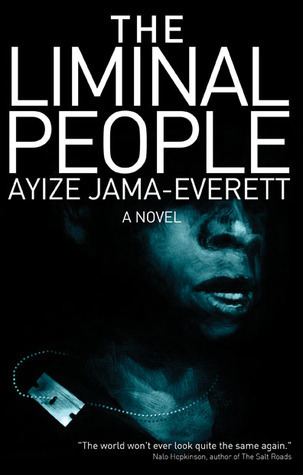
Omnivoracious has posted my profile of first novelist Ayize Jama-Everett, whose The Liminal People is out from Small Beer Press. It's a great book, and the author was a great interview subject (unless the jerk in the post directly below this one.) Go check it out!
Later, in college, he would hone his talent for dialogue by taking screenwriting classes, while a job at a comic book store after college gave him new insight into the possibilities of graphic novels. "God Bless Comic Relief in Berkeley California. It was the first place that introduced me to a higher level of graphic novels. Somewhere I still have a copy of William S. Burrrough's Tornado Alley illustrated by S.Clay Wilson. I read Paul Aster's City of Glass graphic novel illustrated by Dave Mazzucchelli, and Watchmen. I drooled over early Paul Pope work at the same time I discovered an amazing old series called Beautiful Stories for Ugly Children. I saw the medium as a vehicle and not a genre and knew that what I wanted to write would always be influenced by the literary culture I grew up in. So I stopped trying to find an artist to draw my scripts and started writing stories that I loved."
The Liminal People: A Great First Novel originally appeared on Ecstatic Days on February 13, 2012.
Who's on the Rack? Moi? I Don't Think So…
So I found the solicitation under the cut to be more than a little odd, and given the references to "brutal" and "rude" and "pressures" I'm under (?!), I thought I would respond as if I were a complete a-hole—take the offensive as it were and turn the tables. Only seven answers were posted to the On the Rack feature, but you can read the full interview below.
Note that the direct link to their On the Rack feature on me does not include anything about "brutal" or "rude"…thus making me look simply brutal and rude, I suppose….but I answered completely in the spirit of the context as I saw it, because what author worth their salt is going to just go along with the idea as presented?
***
"Under the heading 'The Rack', my job is to ask authors seven questions. These questions are meant to verge on the brutal or at least thought provoking. Because there is no obvious reason at all why an author should consider a question he or she might see as rude rather than brutal, I have enclosed a list of twenty four questions any seven of which you might answer. To embroider a previous phrase, there is no obvious reason at all why, with all the various pressures you face, you should feel the need to reply to this invitation from 'The Rack'. All I can say, by way of appeal, is that I am asking authors I particularly like, OFW will also have a world wide audience, and the seven questions will be sandwiched between two paragraphs advertising your books and extolling your praise. I hope this formats okay in this little box :) —Yours sincerely, Mike Keyton"
Questions & Answers
1. Which poet or author makes you jealous and why?
****No one. I am a closed vessel who pays no attention to anyone else's pathetic attempts at creative endeavors.
2. At what point of your writing process do you consider the reader if at all?
****When I need money.
3. What makes your work worth paying for?
***Fuck if I know.
4. Do you really feel you write well or did you just get lucky?
***I most definitely did not get lucky.
5. Does bestseller mean good writer?
***Does "nightingale" mean "horribly malformed troll"?
6. To agent or not to agent? Why or why not?
***The more idiots who decide not to, the better for me.
7. E-books: Exciting, or a cause for unease?
***Hold two mutually exclusive ideas in your head. See? Nothing exploded.
8. What do you think about self-publishing?
***Lots of things. Oh, do you want me to expand on that?
9. Have you ever described yourself as "author" or, "published author"? Why"
***Have you ever described yourself as a published interviewer?
10. Which five books do you think are better than yours
***None. I have never written anything that was less than pure genius.
12. The Rolling Stones, PD James: do you think writers have sell by dates.
****Creators aren't cans of tuna.
13 Is there an over-arching moral theme in your work, if so what?
****The over-arching moral theme in my work is that there is no moral theme.
14 Do you think a classic novel requires a moral theme?
***Do you think a hamster needs a crash helmet?
15 Elmore Leonard listed ten rules, one of which is: 'Try to leave out the part that readers tend to skip. Think of what you skip reading a novel.' What rule or piece of advice would you add to the list, and if you know his ten rules, which one would you break?
***If you want to write like Elmore Leonard, follow his rules. If you don't, don't.
16 Would you see it as an exciting or a retrograde step if digitisation encouraged writers to choose sound and pictures to augment their words.
***Do you mean…create their own videos, films, or online comics? Well, then, sir THAT WOULD BE A TOTALLY DIFFERENT FUCKING MEDIUM.
17 Should writers strive for literary merit?
***Should hamsters wear crash helmets?
18 Is your work original or another version of a tired old story?
***My work is of such blazingly incandescent genius that it renders this question irrelevant.
19) Are you a good writer?
***Are you a murderer of children?
20) Has a book every made you cry, and if so, which one?
***That's personal.
21) Which literary character would you like to sleep with?
***Do you mean what imaginary person would I pathetically like to fantasize about?
22) Which is the worst book you have ever read and b) Which is the worst book you have never read
*** *The Flatulence of Interviewers*, by Mike Keyton. And, b), *I, Nose Picker* by Mike Keyton
23)What assumptions do people make about writers?
***That they should have infinite patience.
24)What question do you hate the most when people find out you're a writer?
***This one.
Who's on the Rack? Moi? I Don't Think So… originally appeared on Ecstatic Days on February 13, 2012.
February 8, 2012
Shared Worlds Critter Map: Unique SF/F Teen Writing Camp Registration and Fund Drive!
The Shared Worlds SF/F teen writing camp 2012 registration and fund drive has begun–and it's all being driven by the wonderful fiction contributions you can find here from the likes of Neil Gaiman, Lev Grossman, N.K. Jemisin, Scott Westerfeld, Karen Lord, Amal El-Mohtar, Eugie Foster, Michael Moorcock, Kit Reed, Tobias Buckell, Patrick Rothfuss, Gene Wolfe, Lavie Tidhar, and many more. (Including a lively Finnish contingent: Johanna Sinisalo, Viivi Hyvönen, and Leena Litikalo.)
Click on a critter and a read a story. Like what you read? Please donate. Interested in registering for the 2012 Shared Worlds camp? There's a link for that, too.
The art by Jeremy Zerfoss was also the cover of the Shared Worlds student writing book from 2011, displayed below surrounding my wife Ann. The stories were compiled and edited by Therese Goulding. Greg Bossert created the site. Below the cut you'll find the official press release. Please spread the Critter link far and wide. Thanks!
TOP AUTHORS CONTRIBUTE TO THE SHARED WORLDS CRITTER MAP
Shared Worlds SF/Fantasy Teen Writing Camp Launches 2012 Registration and Donation Drive
https://www.wofford.edu/sharedworlds/...
Neil Gaiman, Lev Grossman, Scott Westerfeld, and thirty-seven more of the most imaginative writers from around the world have contributed to Shared Worlds' "Critter Map," a webpage of fantastical beasts. Their whimsical descriptions of imaginary creatures created by pop artist Jeremy Zerfoss are in support of the Shared Worlds registration and fund drive for 2012. Every summer up to 50 teen writers come to Shared Worlds SF/F Teen Writing Camp at Wofford College in Spartanburg, South Carolina, from as far away Japan to participate in this unique camp. This year, registrants include teens from all parts of the United States as well as Germany and Indonesia. Wofford College provides a structured, supervised environment in which the students can excel and demonstrate their creativity.
At Shared Worlds, the students form teams in classrooms to build entire fantasy or science fictional worlds in the first week and then write stories in those worlds the second week. Top professional writers are on hand to provide feedback and to conduct workshops. The guest writers for the 2012 include New York Times bestsellers Julianna Baggott, Naomi Novik, and Tobias Buckell as well as Prix Award Winner Karin Lowachee and Hugo Award winner Ann VanderMeer. The teens also get to attend author readings, take fieldtrips to bookstores, and create videos about their imaginary worlds. Shared Worlds also publishes an annual book of the students' writing.
"For many of our students, Shared Worlds is a transformational experience," said the camp's assistant director, fantasy writer Jeff VanderMeer. "They not only learn more about writing, they also get to have fun solving problems in in the world-building groups, and they form what will probably turn out to be life-long friendships with like-minded teens."
The "Critter Map" is the cornerstone of a donation drive intended to ensure that attending the Shared Worlds Teen Writing Camp can be a possibility for all registered students, no matter what their financial need. Monies will join contributions from donors like Michael Chabon and Ayelet Waldman and major support from Amazon.com.
The contributors to the "Critter Map" range from such icons as Michael Moorcock and Gene Wolfe to exciting new authors like Viivi Hyvönen and Kirsten Imani Kasai. Filmmaker and writer Gregory Norman Bossert has created the Critter Map website, and Therese Goulding served as editor for the contributions.
Additional Links:
Critter Map stories alphabetically by author: https://www.wofford.edu/sharedworlds/...
Shared Worlds Website: http://www.wofford.edu/sharedworlds/%20
Donation Page: http://www.wofford.edu/sharedworlds/d...
Registration Page: https://www.wofford.edu/sharedworlds/...
Shared Worlds Critter Map: Unique SF/F Teen Writing Camp Registration and Fund Drive! originally appeared on Ecstatic Days on February 8, 2012.
February 7, 2012
Book Haul: Squeeing All the Way Home with Kelly Link, Madras Press, Small Beer, PM, and More!
Madras Press, run by Sumanth Prabhaker, is one of my two favorite new publishers (the second being the Dorothy Project). Madras produces these absolutely perfect little editions of stories in book form. In the case of the one above, a special edition of Kelly Link's great story "Stone Animals" with illustrations by, among others, Lev Grossman, Daniel Handler, Ursula K. LeGuin, Laura Miller, and Audrey Niffenegger. Wow. It's a gem.
As with all Madras Press editions, including the three pictured directly below, the proceeds go to charities, a different one for each book. Go check out their website and buy, buy, buy!
Also in the mail today—it was a truly bountiful day—were lit mags, a novel by a new writer, from Small Beer, a Small Beer collection by Nancy Kress (one of my Clarion instructors), nonfiction by Michael Moorcock, a novel by Matt Bell, and an intriguing-looking novel from Angry Robot, all pictured below the cut.
Book Haul: Squeeing All the Way Home with Kelly Link, Madras Press, Small Beer, PM, and More! originally appeared on Ecstatic Days on February 7, 2012.


